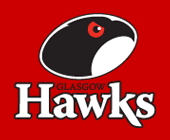|
The Herald reports
The added pressure of a World Cup year makes 2011 crucial for rugby
Published on 6 Jan 2011
Kevin Ferrie
So we enter a World Cup year .
. . bringing with it much interest and, in turn, pressure on professional coaches, in Scotland perhaps more than anywhere. Maintaining a winning feeling among players is the most obvious priority as Edinburgh and Glasgow Warriors bid to remain competitive against the odds, while Scotland seek to continue the competitive progress of the past year.
An equally big task will be at the negotiating table as Andy Robinson’s relationships with clubs outwith Scotland are examined, while Rob Moffat at Edinburgh and, perhaps even more so right now, Sean Lineen at Glasgow Warriors, try to keep their best players in Scotland.
The failure of either will make the success of the other all the more important because, in World Cup year more than any other, the need for maximum preparation time is paramount. That applies to Scotland more than any other leading country, because the respective playing numbers place an extra prerogative on making sure the collective adds up to more than the sum of the individual parts.
They are in a World Cup pool with England, who pay handsomely to get their players released from their clubs, and Argentina, who showed at the last World Cup just what they can achieve when they get their best players together for any length of time.
Right now, more than half of my first-choice starting XV for those ties – three from Lamont (Toulon), Lamont (Scarlets), Danielli (Ulster) and Walker (Ospreys) in the back three; Parks (Cardiff Blues) and perhaps Lawson (Gloucester) at half-backs; Murray (Newcastle Falcons), Hines (Leinster) and Brown (Saracens) in the pack – would be exiles.
If that is anywhere close to the thoughts of Robinson, then Scotland’s World Cup bid is already heavily dependent on the goodwill of those in charge of clubs in other countries.
That situation is only likely to worsen at this time of year, when what is effectively the main transfer window for rugby players opens up.
What price, for example, Max Evans or Graeme Morrison being Glasgow players come the World Cup as their contracts come up for renegotiation? Further down the road, the likes of John Barclay, John Beattie, Richie Gray and, at Edinburgh, Ross Ford, Mike Blair and Ross Rennie, to name but a few, will need to know that their clubs ambitions match their own.
The task for Lineen and Moffat in persuading leading players that they will be part of genuinely competitive teams is as vital as any money they can offer to base themselves in Scotland and right now the evidence is not good.
A brace of derbies in which they effectively cut one another’s throats by taking a home win apiece with not a bonus point registered by either over the two games, only reinforced the unlikelihood of either staging the sort of challenge for Magners League play-off places that both sustained to the very end of last season’s campaign.
So far, too, in two of the easiest Heineken Cup pools, they have registered fewer wins between them than at this time last season.
Perhaps it is all down to the financial climate but a significant drop in support for the two professional teams could easily be interpreted as reflecting recognition among supporters that squads which are, in relative terms, becoming weaker year on year, are becoming a less attractive proposition.
With the boost that comes from the derbies now behind us, the average gate at Edinburgh and Glasgow matches this season is 3630, down from 4988 at this time last year. That is a drop of some 26% on what were already among the lowest gates in European professional rugby, close to 29% down at Edinburgh and around 23% down at Glasgow.
That all adds up to there being little evidence of the professional teams generating additional income any time soon, which surely means the exodus we saw from Glasgow last summer is the shape of things to come, without a radical change of thinking at Murrayfield.
There, the impression is that the age-old debate between the price of commodities and the value of investment is taking place.
Those crowd-figure comparisons are slightly affected by a promotion which resulted in those attending the 2009 Autumn Tests being given free tickets for one of the festive derbies, thereby doubtless increasing interest in both.
It was not repeated this season and attendances at both matches were significantly down, at Firhill by more than 1700 and at Murrayfield by close to 2500.
Tests at Murrayfield are by no means guaranteed sell-outs any more either so, while people traditionally turn to sport in times of austerity, that will only happen if they believe they will be getting value for money.
A time to speculate, or to tighten the belt and hope for better things ahead? It already feels as if 2011 will be a crucial year for Scottish rugby in many ways.
This article was originally posted on 6-Jan-2011, 07:56 by Hugh Barrow.
Last updated by Hugh Barrow on 6-Jan-2011, 07:56.
|









